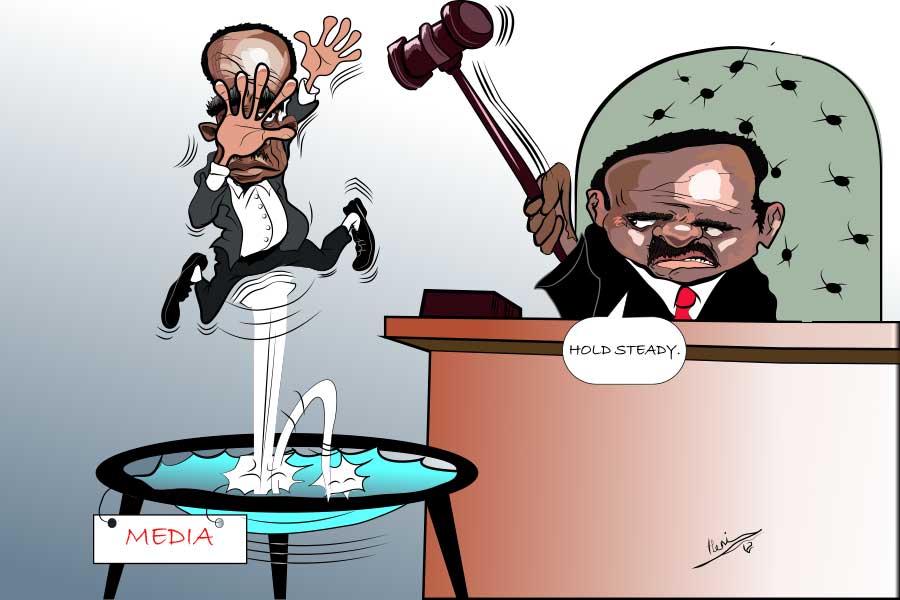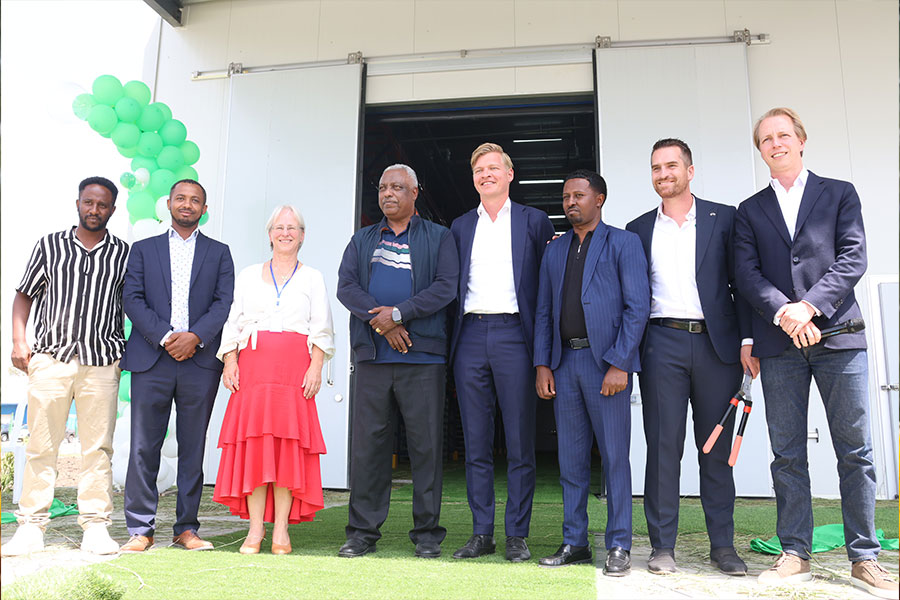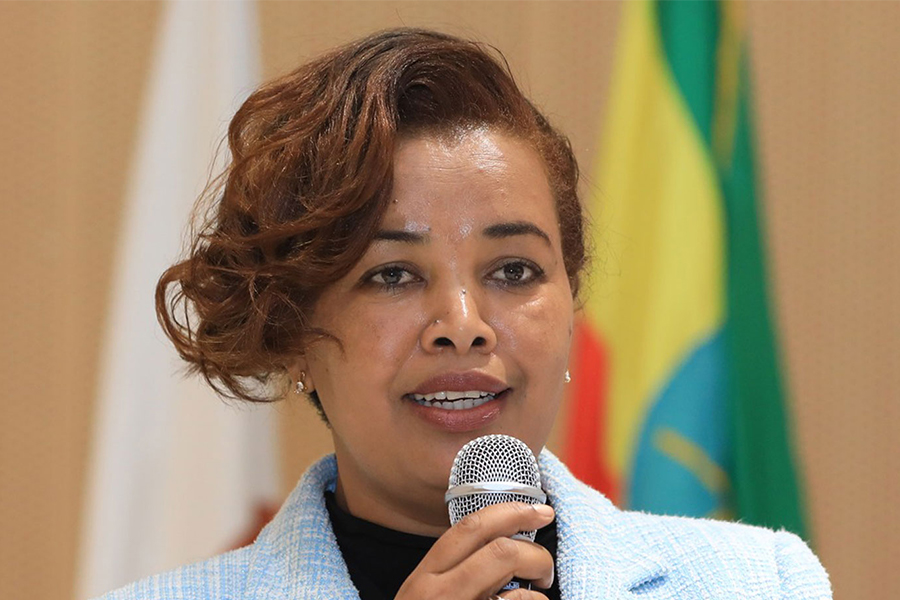
Editorial | Jul 18,2020
May 31 , 2020
By MEHRET OKUBAY ( FORTUNE STAFF WRITER )
The Tigray Regional State government has begun undertaking structural reforms by shrinking public offices and decentralising its top-down structure.
Hoping to increase the efficiency of the regional government, coupled with procedural reforms within the ruling party and the decentralisation of power, the Regional State is set to roll out reforms until the end of this fiscal year.
The restructuring has affected all levels of government starting with kebeles, which are the lowest government organs and are designed to facilitate administration for up to 5,000 people. It also redesigned the functions of government institutions by decentralising power and empowering and specialising government structures at the lower levels of the regional government.
The functions of weredasused to be determined by the State Council, which determined a uniform structure for the regional and weredalevels. The new State Council legislation only provides standards but allows weredasto determine their own structure, according to Seble Kahsay, head of Tigray's Public Service Bureau.
Most weredashave also been reconfigured. The 52 weredasin the region have now been restructured into 94 weredasand cities. The restructuring brings together the weredasbased on natural resources of the areas, population size, historical and cultural contexts, as well as the choice of the people of the area.
The restructuring will also be redesigning offices at all levels. The highest number of offices at the weredalevel has been reduced from 24 to 11.
Every position under those of the political appointees, such as directors and team leaders, has newly set minimal standards, and examinations will take place to fill these positions. Accordingly, the Regional State's Public Service Bureau has over 3,000 open positions at all levels, according to Seble.
"Previously, restructurings would allow people in their former positions to continue if they fulfilled the new requirements, but we’ll be doing things a bit differently," said Seble. "We're opening up all positions for merit and competition-based assignments."
The regional and zonal level restructuring is expected to be completed by the end of June. The bureau offices will mainly be undertaking the role of lawmaking, policy design, research and capacity building.
Experts close to the process indicated that the regional government is considering abolishing zones altogether.
Tesfaye Aregaw, assistant professor of management and development studies at Meqelle University and research team member for the restructuring effort, argues that the outdated former structure triggered the new changes.
The former structure is nearly 25 years old and, in addition, the formation of weredaswas exclusively based on population size. According to him, weredaswere formed on the mere requirement that they have a population of 100,000 people.
"It didn’t even clearly stipulate why the number was chosen,” he said. “The structure and form of weredaswere also uniform in all places. They weren't designed to utilise the potential and natural resources of the area.”
Weredaswere disproportionate in size, and the distance people had to travel to receive service varied dramatically, according to Tesfay, who also mentions a lack of coordination among weredasas another important factor that led to poor administration.
In developing the new structure, the Regional State took into consideration the experiences of the federal systems of Nigeria, Canada, Germany and India and developmental state models such as Rwanda, South Korea and Vietnam, according to Tesfay.
“We've tried to study how these systems have evolved and designed a system that is appropriate for Tigray,” said Tesfay.
Assefa Fissha (PhD), a constitutional law lecturer at Addis Abeba University who had conducted a study on local administration in Tigray, says the principle of the last restructuring in 2001 mostly informed the national strategy on local administration and reducing administrative costs.
"The restructuring that took place in 2001 reduced the number of weredasin Tigray from 81 to 35," he said. "Four weredaswere brought down to one in some areas, while two were folded into one in most places."
The reform made it difficult for people to receive basic services in nearby areas; people would need to travel long distances to attain IDs and pay taxes, according to Assefa.
"After the federal system was put into place, it was clear that the structure wouldn’t allow for sufficient decentralisation in terms of delivery of public service and increasing local-level accountability," he said.
Assefa highlights that structural arrangements in Tigray did not encourage accountability among leaders that were appointed by and answered to the political party.
Zones also became political entities that would directly determine the effectiveness of the weredas. While they may have been effective in providing some services, they did not represent the important cornerstones of modern and democratic systems that could deliver on development objectives, according to the lawyer.
The leadership of cities was also centralised, and city administrations and service provision was undertaken by one entity. The study indicated that the cities in the state would exhibit better progress if leadership was more decentralised at sub-city levels.
With the new reform, kebelesare central in the provision of services in the region with the hope of increasing efficiency, according to Seble.
"Moving forward, we're working to ensure most services can be provided by the kebele, while the weredaand zonal levels will be focused on capacity building, support and follow up with the kebeles,” said Seble.
Kebelesin the rural areas were previously administered by volunteers that operated the stations in their spare time. The new system has made them into permanent hired positions by the Regional State.
Tigray People’s Liberation Front (TPLF) is also undergoing a reform that includes how appointments and leadership positions are attained within the party structure, as well as political appointments for government positions. Leadership at both the weredaand zonal levels are done by members of the respective area.
“Members at the kebelelevel send representatives to the zone, and the weredalevel elects the leadership," says Abraha Amha, head of Rural Public Relations for TPLF. "Previously, assignments were done by the TPLF office or politburo depending on the position."
Leadership positions attained by political appointment at the weredalevel in the past would be presented to the Council for approval. The procedure now gives weredasthe responsibility of nominating no more than three party members and the appointment of the head. The weredacabinet will later be appointed by the head of the wereda.
Heads at the zonal levels are still nominated by the general assembly of the party. All positions have been refilled according to the new procedures, and some 32 of the 94 positions at the zonal level have been filled by new appointees.
About 557 of 1,357 positions at the weredalevel have new appointments within both the party and government structures, according to the party.
The party believes this is an important step in bringing about more democratisation and accountability within the party and government, according to Abraha.
Kinfe Hadush, public administration lecturer at Meqelle University and member of Salsay Wayne Tigray, a political party in the region, strongly argues that positions at the wereda executive level should be professionalised.
"The ruling party should only be given a majority within the weredacouncil to oversee sound and effective leadership," he said. "This would also increase accountability. It is important to emphasise the importance of empowering permanent and professional positions to be held within the weredacouncil."
This transition to the new weredastructure, choosing the capital and naming titles, has brought with it some controversy, including protests that were held in different parts of the Regional State, including two main disputes this past week in Shire and Wajirat.
Amdom Gebresilassie, public relations head of the opposition Arena Party, says the restructuring was a result of wide discontent in the region but was done in a hurried manner to tame dissatisfaction and was therefore not able to achieve its goal.
“TPLF claims the restructuring is based on the research of intellectuals," he said, "but we haven’t seen the research outputs or discussed the direction. You have to understand your illness before you can find a solution."
PUBLISHED ON
May 31,2020 [ VOL
21 , NO
1049]

Editorial | Jul 18,2020

Radar | Sep 21,2025

Radar | Jun 21,2025

Fortune News | May 25,2019

Fortune News | Aug 16,2020

Radar | Apr 06,2019

Radar | Jun 07,2025

Viewpoints | Oct 26,2024

Radar | Feb 26,2022

Radar | Oct 06,2024

Dec 22 , 2024 . By TIZITA SHEWAFERAW
Charged with transforming colossal state-owned enterprises into modern and competitiv...

Aug 18 , 2024 . By AKSAH ITALO
Although predictable Yonas Zerihun's job in the ride-hailing service is not immune to...

Jul 28 , 2024 . By TIZITA SHEWAFERAW
Unhabitual, perhaps too many, Samuel Gebreyohannes, 38, used to occasionally enjoy a couple of beers at breakfast. However, he recently swit...

Jul 13 , 2024 . By AKSAH ITALO
Investors who rely on tractors, trucks, and field vehicles for commuting, transporting commodities, and f...

Oct 25 , 2025
The regulatory machinery is on overdrive. In only two years, no fewer than 35 new pro...

Oct 18 , 2025
The political establishment, notably the ruling party and its top brass, has become p...

Oct 11 , 2025
Ladislas Farago, a roving Associated Press (AP) correspondent, arrived in Ethiopia in...

Oct 4 , 2025
Eyob Tekalegn (PhD) had been in the Governor's chair for only weeks when, on Septembe...